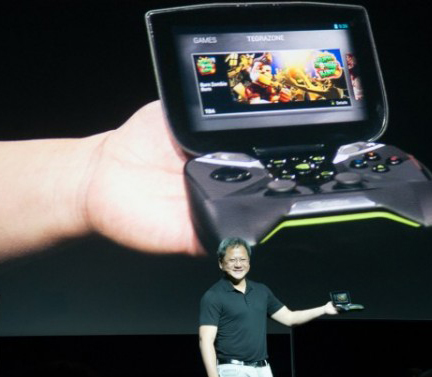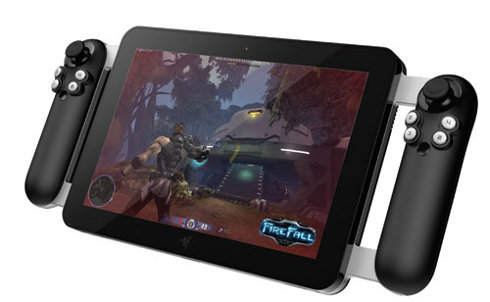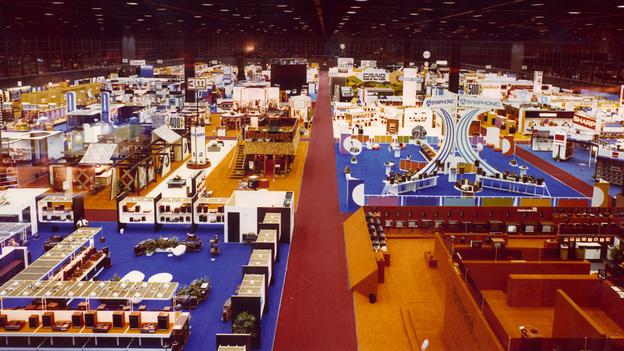By Meelad Sadat
Right around the time a ‘smart fork’ started making headlines out of CES 2013, it was hard not to sense that maybe this was the year this massive trade show that used to daze and dazzle us had the fork stuck in it. Still, it’s impossible to gather 150,000 people, among them some of the brightest minds and smartest companies in technology, and not come away with a few surprises.

Nvidia seemed to garner the lion’s share of press attention, especially in the gaming press. They surprised the game industry with their Project Shield handheld system and their move into cloud gaming with their Grid tech. Consumer minded companies focused on getting people to start spending on the gadgets they want, with more, better and cheaper tablets, HDTVs, laptops and smartphones rolling out. Outside of that, it seemed the goal this year was to make everything smarter – TVs, cars, the aforementioned fork, and probably a toaster we missed.
For deeper insight than that, we gathered Michael Pachter, analyst at Wedbush Securities, Scott Steinberg,strategic innovation consultant at TechSavvy Global, and Chris Younger, principal at Ayzenberg, for their takeaways from this year’s show.
What was your one showstopper, and were there any big no shows or total flops for you?
Michael Pachter: No real showstoppers. I really saw nothing that jumped out at me as innovative or must have. I thought that [Project] Shield from Nvidia was really interesting, insofar as it is so bold and different, but I don’t think it will resonate with consumers, so hardly a showstopper.
Chris Younger: Not exactly a flop but for TVs, I’m not sure there’s consumer appetite for yet another jump in flat screen technology that comes in the form of 4K, many of the 1080p screens are beautiful and finally affordable. Improvements with smart feature software technology is coming along. As my showstopper, David Politis, CMO of Xi3, was not prepared for the crush of loyal Valve/Steam fans crashing his 10 x 10 booth.
Scott Steinberg: Perhaps the biggest no-show or flop was the lack of a device which promised to address these points of concern for consumers on the TV front – so-called ‘smart,’ or connected, features are actually among tomorrow’s most promising avenues, but studies show they’re often dumbfoundingly complex. But I will say this: Being a strategic innovation consultant, we’re often privy to projects further along in the pipeline, including those being developed with CES 2014 and 2015 in mind. Answers may yet be at-hand, just take longer to arrive than anticipated.
From Sony
The CE industry is expecting a sales rebound from the 2012 slump. Was that reflected at CES this year, and what are the products that might lead the charge there?
Scott Steinberg: Yes and no. The line for Sony’s press conference was longer than any I’ve ever seen. However, executives were prone to grumbling internally, and marketing campaigns around new introductions like 4K and OLED TV are clearly being inflated in hopes of creating a premium sales category to fill the void left by 3D’s underwhelming performance. Primary sales are likely to come from growing public interest in smartphones and tablets, and the broadening range of both affordable, value-minded models.
Chris Younger: It’s all about tablets leading the charge — phones with tablet features, a.k.a. “phablets,” and laptops that convert to tablets. The Intel Ultrabook presentation was nice. I think the trend will continue with tablets and mobile devices, so if the industry is looking at 72″+ 4K OLED TV’s and heavy hardware upgrades to lead the charge, it’s not happening. Like with the gaming industry, the trend will be towards service models to offset hardware investments and recoup cost.
Michael Pachter: I do not believe that the CE industry will see a rebound this year. Nothing is really all that new, except for things like tablet and mobile peripherals. The core products were all pretty much what we’ve seen before, and I didn’t see anything particularly compelling that would suggest a rebound.
How were games represented this year?
Michael Pachter: Games were almost invisible at the show this year. We had the usual big game – this time Tomb Raider — but not much else.
Chris Younger: Not in a very big way, considering all of the buzz around next-gen consoles and cloud gaming. Even though it’s selling peripherals, Turtle Beach probably had the strongest game-related hardware presentation behind Razer and Nvidia. Sony focused more on the PSN family of features, and with portability with Vita over PS3 on the hardware side.
 Razer gaming tablet
Razer gaming tablet
Scott Steinberg: The biggest noise came from unexpected players. For example: NVIDIA’s Project Shield, or Razer’s Edge gaming tablet. Archos also unveiled a 7-inch Android gaming tablet (the GamePad), a relatively low-priced, button-equipped alternative to other models. And, of course, AMD debuted its Temash processors for top-end gaming on portable devices and SurRound House concept (think 360- degree positional audio), which makes sound as much a part of storytelling as BioShock’s Rapture did in-game environments.
What do you think of NVDIA’s Project Shield, does it have a shot?
Chris Younger: I thought Shield was great and has a shot if priced right – under $200. I think their Grid tech appears to be real strong cloud gaming solution to address Shield streaming, latency and frame rate issues. You just need that installed everywhere. I understand the Tegra chipset is also targeting automotive and TV OEM, so apparently NVDIA has figured out exactly how to bring gaming to the masses wherever they are. No more just watching movies from the back of a head rest when you’re in a car.
Scott Steinberg: As a proof of concept . . . it’s brilliant, and may not need to actually move big numbers to illustrate the power of the company’s chipsets and platforms. Even if it failed in the retail marketplace, it could still prove a victory by rallying third-party creators to the company’s cause, and making the firm a growing household name amongst mainstream audiences.
Michael Pachter: I don’t think Shield has a shot. Dedicated handhelds are just going to slowly die, and the success of the Vita demonstrates that there is not much room for new entrants. I think Shield will attract very little third party support, and do not expect it to succeed.
Outside of NVIDIA’s Grid, did you see anything else at CES that makes you think 2013 is a big year for cloud gaming?
Scott Steinberg: Define “big.” Audience wise, I’d say no. There’s still a large public education piece to be cracked here in terms of communicating upsides, benefits and how to use the technology to the vast majority of players, let alone those outside of enthusiast circles. Availability is also limited, and the need for high-speed Internet service limiting, as is lower support by content creators. But it’s definitely a year where the field will gain in terms of credibility, audience size and awareness. Small but steady steps should be made towards making it a more mainstream technology, and integrating solutions into more hardware devices.
 CES debuted in 1967. This is 1972 – far fewer screens, much more brown.
CES debuted in 1967. This is 1972 – far fewer screens, much more brown.
The buzz about CES irrelevance seems to get louder every year — it’s reminiscent of E3. Apple, Amazon, Google, they’re no shows. Microsoft bowed out this year. What do you think the future holds for CES?
Chris Younger: The trend for these shows will be focused on products consumers can buy. Today business moves at the speed of conversation so waiting every 12 months to garner consumer, press and industry feedback is outdated.
Michael Pachter: CES will always be relevant, it just fluctuates in fan interest with new products. We are at a point where core CE is pretty mature, and the new stuff -super HD TV, 3D, etc. – is all pretty blah. Someone will come up with a must have product, and will debut it at a future CES.
Scott Steinberg: CES isn’t as much of a key battlefield for major industry players as it once was, partly due to cost concerns, and partly because they’re more focused on hosting private corporate events. But it’s still a tremendously powerful platform for catalyzing public interest, and as such should be looked to as one of many tent-pole events year-long. If there’s one takeaway from some of the exodus that’s occurring, it’s this – the show will develop to be more about overarching trends than individual products or market players going forward, and offer more room for innovative new startups to shine.

